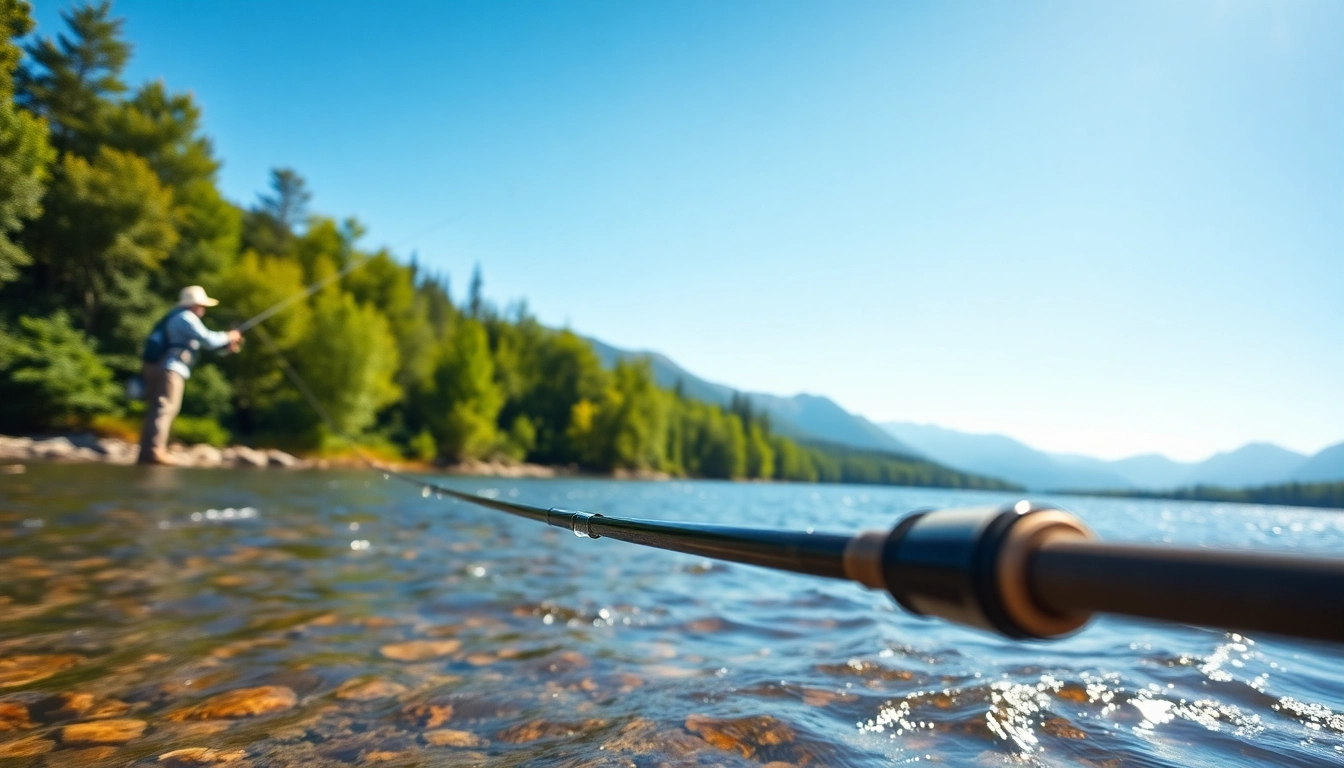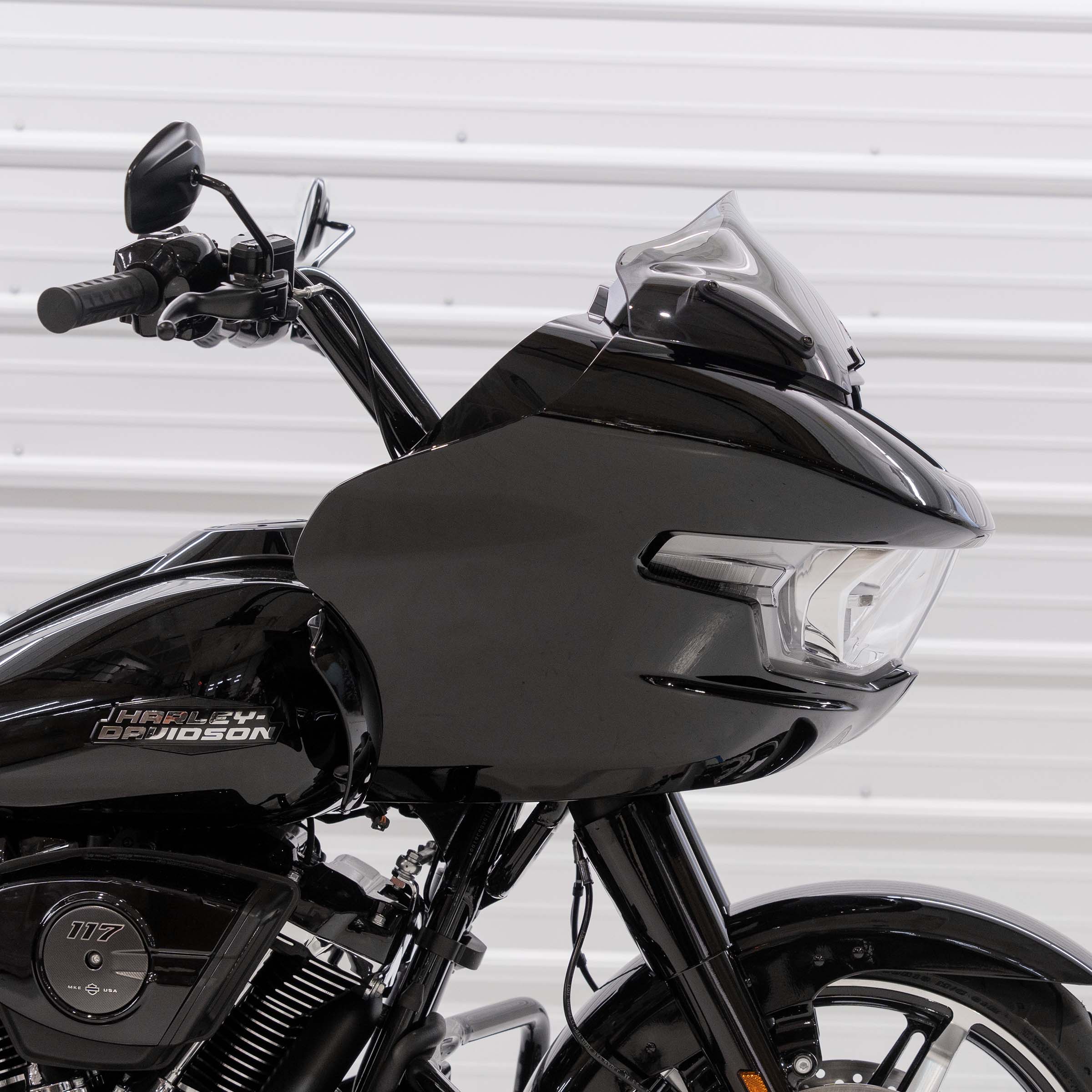Understanding the Importance of Choosing the Best Fly Fishing Rods
When it comes to fly fishing, the rod is more than just a tool; it is an extension of the angler. Selecting the right fly fishing rod can significantly impact your fishing success, your comfort throughout the day, and your overall experience on the water. However, with the vast array of options available, finding the Best fly fishing rods requires a deep understanding of various factors that contribute to performance.
The Role of Rod Weight in Fly Fishing
Rod weight is one of the most crucial parameters to consider. It plays an essential role in determining how a rod will perform under different fishing conditions. Generally, rods are classified by their weight, measured in grains. A 3-weight rod, for instance, is best for smaller streams and delicate presentations, while a heavier rod, like a 9-weight, is better suited for larger fish in rivers or saltwater settings. Here are some critical insights into how rod weight affects performance:
– Delicate Presentations: Lighter rods facilitate finesse casting, allowing anglers to present flies gently, mimicking natural prey.
– Distance and Power: Heavier rods cast farther and provide more power for tackling larger fish. They enable anglers to throw heavier lines and larger flies, which can prove advantageous in windy conditions.
– Technique Adaptation: Different weights correspond with various techniques, whether nymphing, dry-fly fishing, or streamer fishing. Ensuring your rod weight matches your technique is vital.
Length and Action: Key Factors for Performance
The length and action of the rod also play significant roles in performance.
– Length: Fly rods typically range from 6 to 10 feet or more. Longer rods allow greater casting distance and better line control, particularly on larger bodies of water. Conversely, shorter rods provide increased accuracy and are advantageous in tight quarters such as small streams.
– Action: The action of a rod describes how it bends when pressure is applied. Fast action rods flex mainly at the tip, offering precision during casts and sensitivity to bites. Conversely, slower action rods bend more along the length, providing gradual loading that can help with delicate presentations and ensuring smoother casts.
Understanding how length and action interplay with rod weight can help you select the ideal rod for your fishing style and the environments you fish.
Materials and Their Impact on Durability
Materials used in constructing fly rods are fundamental to their performance, durability, and price. Common materials include:
– Fiberglass: Known for its durability and flexibility, fiberglass rods are excellent for beginners and smaller streams. They offer a softer action that’s more forgiving and less likely to overwhelm beginner anglers.
– Graphite: This material is the standard in modern fly rods. Graphite offers a favorable strength-to-weight ratio and allows for fast action rods that excel in performance.
– Bamboo: Traditional bamboo rods are admired for their aesthetics and smooth casting abilities. While heavier and less common than modern materials, bamboo offers a unique experience but is typically more expensive and less durable.
Selecting rods made from high-quality materials can ensure you have a tool that withstands the test of time, allowing you to focus on your fishing without worrying about equipment failure.
Top Features to Look for in the Best Fly Fishing Rods
Once you understand the fundamental elements of fly rods, it’s time to delve into the features that can enhance your fishing experience.
Grips and Reel Seats: Comfort and Functionality
The grip on a fly rod might seem minor, yet it is critical for comfort and control.
– Grip Material: Most grips are made from cork or EVA foam. Cork offers a classic, comfortable feel, while EVA foam is more durable and resistant to wear.
– Shape and Size: Ensure the grip fits comfortably in your hand. A properly sized grip will reduce fatigue during prolonged use and enhance control over the rod during casting and fighting fish.
– Reel Seats: Select a reel seat that efficiently locks your reel in place while being lightweight. High-quality reel seats also prevent corrosion while maintaining a secure attachment in various fishing environments.
Guides and Ferrules: Ensuring Smooth Casts
Guides and ferrules are essential for enhancing rod performance.
– Guides: Quality guides facilitate smooth line flow and reduce friction, which enables further casting distance while casting. Look for ceramic or hard chrome materials to provide durability and enhance performance.
– Ferrules: These connectors that join rod sections must fit securely to maintain line integrity and performance. Well-fitted ferrules are vital, particularly when dealing with larger fish that might put pressure on the rod.
Investing in rods with high-quality guides and ferrules will yield significant returns in terms of performance, especially during challenging fishing conditions.
Cost vs. Quality: Finding the Right Balance
When searching for the Best fly fishing rods, balancing cost and quality can be daunting. Here are significant points to consider:
– Budgeting: Establish your budget early. While some premium rods may offer cutting-edge technology, there are many affordable options that can still provide excellent performance.
– Performance vs. Price: Higher price does not always correlate with better performance. Evaluate your specific needs, skill level, and the environments in which you fish.
– Use Recommendations and Reviews: Take advantage of online resources and community reviews to gauge performance and pinpoint undervalued options among the hundreds of fly rods available.
Finding value should be your priority rather than solely focusing on the most expensive option available.
The Best Fly Fishing Rods for Different Fishing Styles
Different fishing styles necessitate various rod features. Understanding your preferences and fishing environments will enable you to choose wisely.
Freshwater vs. Saltwater: What to Consider
When fishing in freshwater, you face various target species, including trout, bass, and panfish.
– Freshwater Rods: Lighter rods (3-7 weights) work best, with medium lengths often excelling for distance and accuracy. Consider using slower action rods for more delicate presentations like dry flies.
– Saltwater Rods: For saltwater fishing, rods need to be more powerful due to the larger size of target species and the robust environments. Typically, 8-10 weight rods are favored for their strength, casting abilities, and range.
Understanding the water type helps you determine rod specifications that ensure longevity and utility.
Rods for Beginners vs. Experienced Anglers
The transition from novice to experienced angler requires ever-adapting gear.
– Beginners: Look for versatile, medium-action rods made from durable materials. They allow for a forgiving learning curve while providing adequate performance across various fishing styles.
– Experienced Anglers: Consider rods that cater to specialized styles and techniques, such as switch rods or spey rods for specific situations. Customizable features or fast-action rods can also add significant value and personal touch.
The learning curve demands careful and intelligent investment in rods as skill levels evolve.
Specialty Rods for Unique Fishing Situations
Specialty rods cater to unique environments. If you find yourself frequently in specialized situations, understanding these niche rods is essential.
– Small Stream Rods: Shorter, lighter rods (6-7 feet) shine when maneuverability is crucial in confined areas with dense vegetation.
– Switch Rods: These versatile rods can handle both overhead casts and spey-style casting, making them suitable for diverse waters.
– Euro Nymphing Rods: Long and sensitive, these rods facilitate specialized nymphing techniques, requiring precision for optimal results.
Investing in specialty rods for unique conditions can elevate your fishing experience and success rates.
Maintenance Tips for Ensuring Longevity of Best Fly Fishing Rods
Ensuring that your fly rod performs well over time necessitates proper maintenance practices.
Cleaning and Storage Practices
Keeping your rod clean is essential to maintaining its integrity and performance. Here are some tips to follow:
– Post-Fishing Cleanliness: Rinse your rod with freshwater after every outing to remove any salt, sand, or debris that could corrode materials and guides.
– Proper Storage: Store rods in protective tubes to prevent damage from the elements or accidental bending. A temperature-controlled environment shields them from extreme heat and cold.
Regular cleaning and proper storage elongate the lifespan of your rod, ensuring performance remains optimal.
Regular Inspections and Repairs to Consider
Regular inspections of your rod can save headaches in the long run.
– Periodic Checks: Check guides for cracks or corrosion and ensure ferrules fit securely. Check for any signs of stress or fractures on the rod blank.
– Repairs: Be proactive about addressing minor repairs. A well-repaired guide is better than risking a full replacement that may not deliver the same performance.
Addressing small issues promptly can help prevent significant damage over time.
Protecting Your Investment: Best Cases and Covers
Investing in quality cases and covers can safeguard your rod during transport and storage.
– Rod Cases: Look for padded cases that ensure protection from impact and environmental factors.
– Protective Covers: Using rod socks or protective sleeves can prevent scratches and rid your rod of issues caused by dust or debris.
Proper protection is vital in preserving the integrity and performance of any rod, extending its functionality for years.
Real Customer Reviews of the Best Fly Fishing Rods
Real customer reviews provide critical insights into the practical performance and user satisfaction of fly rods.
Sourcing Insights from Fishing Communities
Engaging with community forums and reviews can yield valuable opinions regarding different rods available in the market.
– Online Forums: Platforms like fishing communities provide recommendations from seasoned anglers who can share firsthand experiences with particular rod models.
– Social Media Groups: Engaging with dedicated groups on platforms like social media enables discussions around the best-performing rods from various users.
Leveraging these insights can guide new purchases and validate quality over promotional claims.
Common Praise and Complaints from Users
Understanding both common praises and complaints provides a well-rounded view of each rod’s real-world performance.
– Praise: High-performing rods frequently receive compliments for their sensitivity, casting distance, and versatility across different fishing styles.
– Complaints: Users may voice frustrations over breakage, maintenance challenges, or costs. Analyzing these complaints can help potential buyers make informed decisions.
A balanced understanding of reviews aids in shifting through the multitude of rod options while ensuring smart choices.
Comparison: User Experience vs. Marketing Claims
It’s essential to balance expectations set by marketing versus actual user experiences.
– Real-World Performance: Reading customer reviews reveals whether marketing claims align with how rods perform in actual settings.
– Identifying Overstated Claims: Many brands may highlight features that may not translate to practical benefits. Actual experiences often provide a clearer picture of what to expect from a rod.
Carrying out thorough research can inform potential rod selections, ensuring you invest wisely in gear that will perform as expected and match your fishing goals.





Leave a Reply